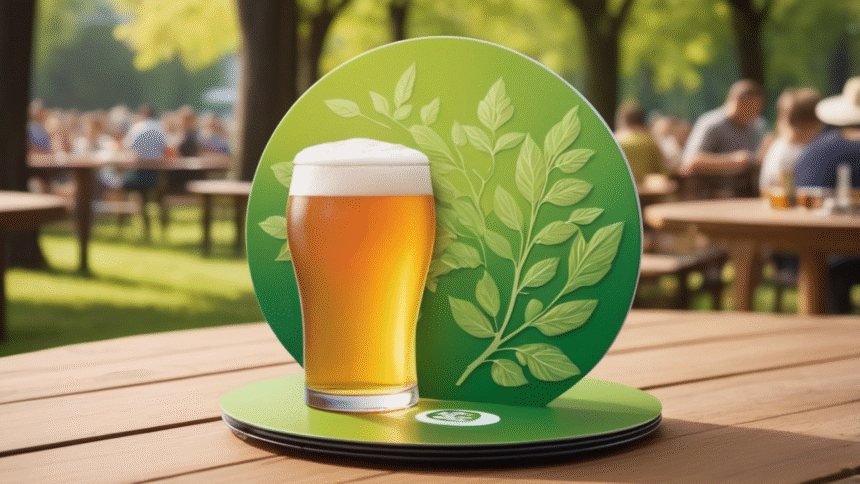The term pappedeckel may sound unusual to those unfamiliar with German, but it carries a fascinating history and practical significance. In German, Pappe means cardboard or thick paper, and Deckel means lid. Put together, pappedeckel literally translates to “cardboard lid.” Although seemingly simple, this invention has played an important role in packaging, sustainability, and everyday life.
This article will explore the origin of the pappedeckel, its different uses over time, advantages in environmental conservation, and modern-day applications. We will also look at why the humble cardboard lid has become a symbol of eco-conscious choices in today’s packaging industry.
also read: https://usaenliinea.com/trucofax/
Understanding the Pappedeckel
The pappedeckel is essentially a circular or rectangular piece of cardboard used as a lid or protective cover for food and beverages. Historically, it was widely used for covering glasses of beer in Germany to protect drinks from dust, insects, and debris. Over time, its applications expanded beyond the beer garden and into various industries such as coffee takeaway services, dairy packaging, and event catering.
A Short History of the Pappedeckel
The origins of the pappedeckel date back to late 19th century Germany, where breweries and beer gardens used them extensively. In an era before advanced refrigeration and sanitary packaging, the pappedeckel served as a cheap yet effective way to keep beer clean and fresh for longer periods.
In fact, in some regions of Germany, these cardboard lids were printed with advertisements for local breweries, political events, or cultural festivals. This made them not just functional but also a form of promotional material.
By the mid-20th century, pappedeckel had become a common sight not just in pubs but in households and marketplaces, where they served as temporary covers for drinks, food containers, and jars.
Traditional Uses of the Pappedeckel
Historically, pappedeckel were found in various settings. The most common traditional uses include:
- Beer Glass Covers – Protecting beer from flies and dust in beer gardens.
- Advertising Medium – Businesses printed logos or slogans on them.
- Festival Giveaways – Distributed during local fairs with colorful designs.
- Food Packaging – Used to cover dairy products like yogurt or cream.
This multifunctional nature made the pappedeckel a simple yet brilliant invention for its time.
Modern Applications of Pappedeckel
With the rise of eco-friendly trends, the pappedeckel has seen a resurgence in popularity. Modern uses include:
- Coffee Cup Lids – Eco-conscious cafés use cardboard lids instead of plastic.
- Event Catering – Hygienic covers for glasses at outdoor events.
- Takeaway Packaging – For soups, salads, and smoothies.
- DIY Craft Projects – Used in creative school projects and upcycling.
- Branding Opportunities – Printed lids for marketing at events.
Environmental Benefits of Using Pappedeckel
One of the main reasons for the renewed interest in pappedeckel is its environmental friendliness. Unlike plastic lids, cardboard lids are biodegradable and often made from recycled materials.
Key Eco-Friendly Advantages:
| Benefit | Description |
|---|---|
| Biodegradable | Decomposes naturally without harming the environment. |
| Recyclable | Can be reused to make new paper products. |
| Sustainable | Often sourced from renewable wood pulp. |
| Energy Efficient | Requires less energy to produce than plastic alternatives. |
| Reduced Plastic Waste | Helps lower the volume of non-biodegradable waste. |
By switching to pappedeckel, businesses and consumers contribute to a circular economy where resources are reused and waste is minimized.
Pappedeckel in Food and Beverage Safety
In addition to environmental benefits, pappedeckel plays an important role in food safety. These lids protect beverages and food from:
- Airborne dust and pollutants
- Insects and flies during outdoor events
- Accidental spills while serving
This makes them especially useful for outdoor cafés, open-air festivals, and street food markets where hygiene is a priority.
Cultural Significance of Pappedeckel
In Germany, pappedeckel is more than just packaging material—it is part of the cultural memory of beer gardens and summer festivals. Collectors often treasure vintage cardboard lids printed with historical advertisements, viewing them as artifacts of a bygone era.
Some communities have even organized pappedeckel design contests to promote local art and environmental awareness. In such events, artists create eye-catching, eco-friendly lid designs that highlight sustainability.
How Pappedeckel Compares to Plastic Lids
While plastic lids have dominated the market for decades due to durability and waterproof qualities, pappedeckel offers strong competition today.
| Feature | Pappedeckel | Plastic Lid |
|---|---|---|
| Material | Cardboard | Petroleum-based plastic |
| Eco-Friendly | Yes | No |
| Biodegradable | Yes | No |
| Cost | Often cheaper in bulk | Varies, generally higher for eco-friendly plastics |
| Customizable | Easy to print designs | Limited customization |
| Recyclable | Yes | Only certain types |
From a sustainability perspective, pappedeckel is clearly the better choice, especially as consumer demand for eco-conscious products grows.
The Future of Pappedeckel in Packaging
With governments implementing stricter regulations on single-use plastics, the pappedeckel is expected to gain even more popularity in the coming years. Innovations may include:
- Water-resistant coatings made from natural substances.
- Heat-retaining cardboard lids for hot beverages.
- Smart QR code designs for digital menus and promotions.
The blending of traditional utility and modern technology could make the pappedeckel a central feature in sustainable packaging strategies worldwide.
Conclusion
The pappedeckel, once a simple beer glass cover in Germany, has evolved into a versatile and sustainable packaging solution. From protecting drinks at festivals to replacing plastic coffee cup lids, its applications continue to grow in our eco-conscious era. Its history, cultural value, and environmental benefits make it more than just a piece of cardboard—it is a small but significant step towards a greener future.
FAQs About Pappedeckel
1. What is the main purpose of a pappedeckel?
A pappedeckel primarily serves as a cardboard lid to protect beverages or food from contamination.
2. Can pappedeckel be reused?
Yes, if kept clean and dry, they can be reused multiple times for covering drinks or containers.
3. Are all pappedeckel biodegradable?
Most are biodegradable, but some may have a thin coating for durability, which should be checked before composting.
4. How is pappedeckel made?
It is typically made from compressed layers of recycled paper or cardboard pulp.
5. Can pappedeckel be printed with logos?
Yes, many businesses customize them with logos, slogans, or event promotions.
6. Is pappedeckel safe for hot drinks?
Yes, but the material should be heat-resistant and may include a food-safe coating.
7. Where can I buy pappedeckel?
They are available from packaging suppliers, online retailers, and eco-friendly stores.
8. Can pappedeckel replace plastic lids entirely?
In many cases, yes, though certain waterproof applications may still require alternatives.
9. Why is pappedeckel popular in Germany?
It originated in German beer culture and became a traditional, hygienic, and eco-friendly solution.
10. Are there regulations for using pappedeckel in food service?
Yes, food safety standards require that they be made from food-grade materials.
also read: https://usaenliinea.com/jhonbaby777/
also read:https://usaenliinea.com/hms-photovoltaik/
also read: https://usaenliinea.com/taboofantazy/
also read: https://usaenliinea.com/fsi-blogs-us-the-ultimate-resource-for-financial-services-insights/
also read: https://usaenliinea.com/united-airlines-flight-ua770-emergency-diversion/
also read: https://usaenliinea.com/explore-famousparentingg-com-a-complete-guide-to-trusted-parenting-advice/
also read: https://usaenliinea.com/vidmattapp-the-ultimate-guide-to-downloading-and-enjoying-videos-offline/







